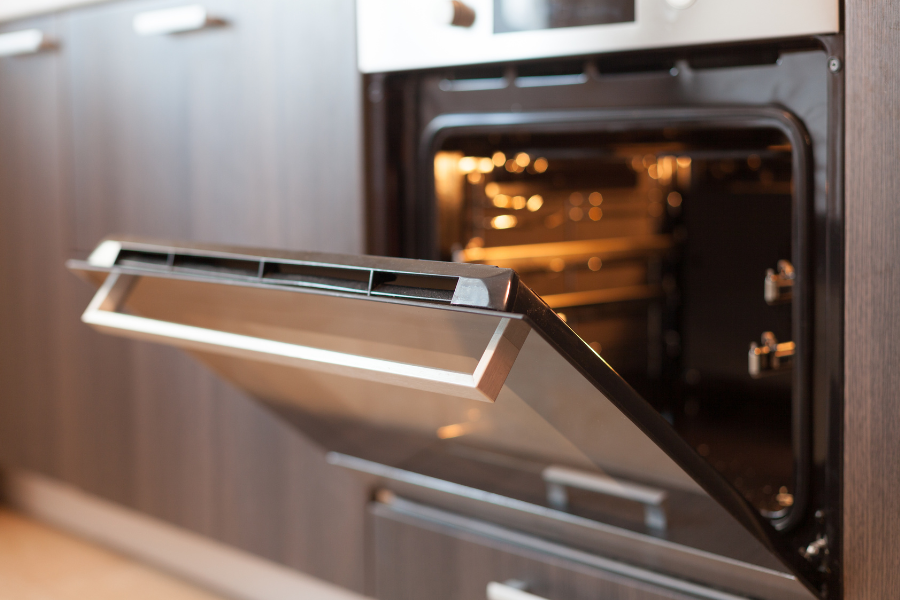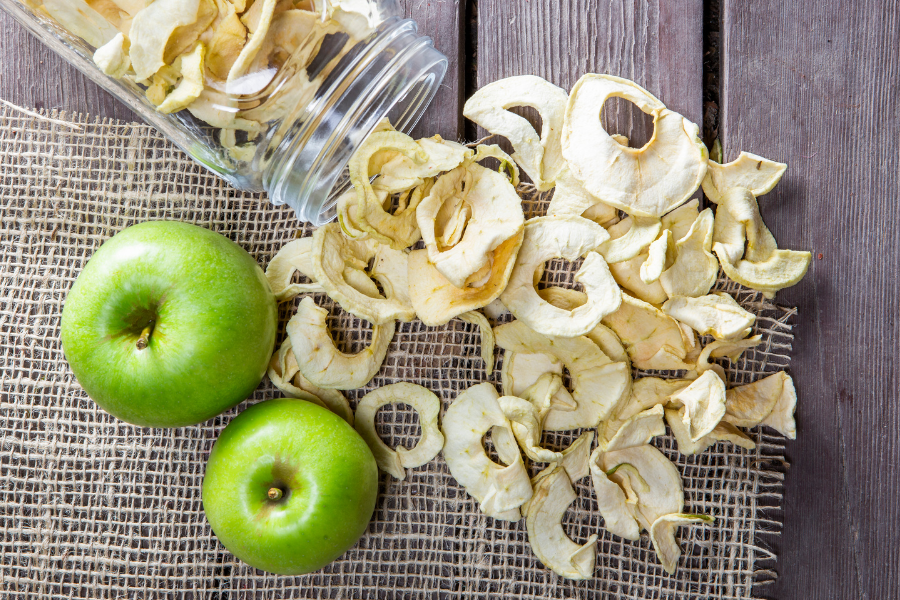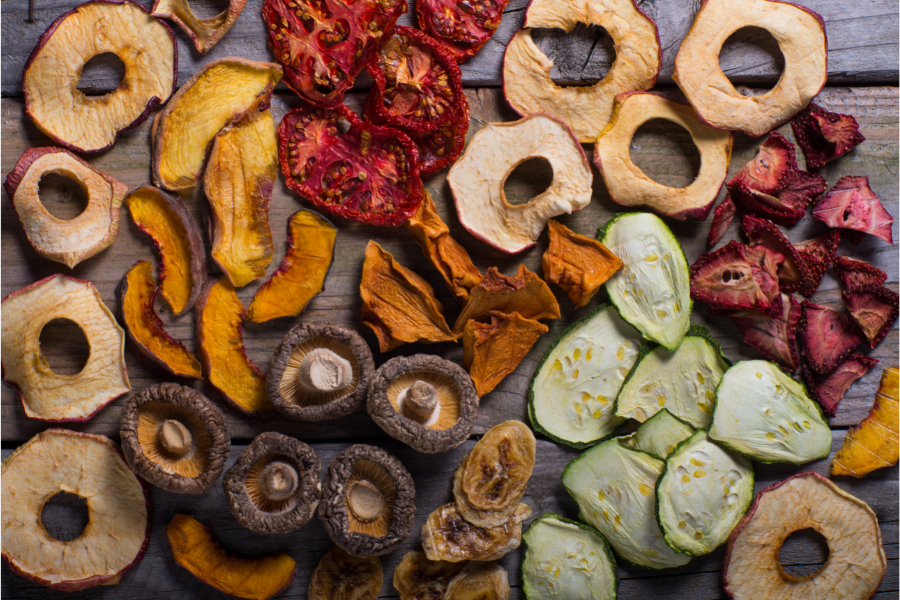Can You Dehydrate Food In An Oven Instead Of A Dehydrator?

Dehydrating food is a fantastic way to preserve fruits, vegetables, and even herbs for long-term storage, but do you really need a dehydrator to get the job done? If you don’t have a dedicated dehydrator, your kitchen oven can be a great alternative. In this article, we’ll explore how to dehydrate food in an oven, share tips for achieving the best results and the best foods to dehydrate. Whether you’re looking to save money or make the most of the tools you already have, this guide will help you master the art of food dehydration at home.
Disclaimer: This article includes affiliate links. If you click one of them, we may receive a small percentage of the sale at no extra cost to you. Thank you for your support!
How Does Dehydrating Food Work
Dehydrating food works by using heat and airflow to draw out the moisture of food. The benefit of dehydrating is that it will allow food items to last longer as they are less likely to spoil or grow mould and bacteria without moisture.
There are many different ways to dehydrate food and types of dehydrators. A few methods include air drying, sun drying, oven drying and electric dehydrating.
How To Dehydrate Food In An Oven

It is quite simple to dehydrate food in an oven. The first step is to preheat your oven to the lowest possible setting. This is key to ensuring your food dries and does not burn from being cooked at too high of a temperature.
Next, cut fruit or vegetables into ¼-inch slices and place them on a baking sheet. To help fruits such as apples, bananas, pears, etc., from browning, soak them in a mixture of one cup of water and one tablespoon of lemon juice (or any acidic juice like pineapple) for five minutes before drying.
While oven times may vary, it can take anywhere from six to ten hours for food to dry. The juicier the food is, the longer it will need to dry out. Be sure to flip food periodically to ensure all sides dry equally.
What Supplies Do You Need To Oven Dry
There are not a lot of supplies required to dehydrate fruits, vegetables and meats in an oven. Chances are you already have all the items in your kitchen. Here is a general list of what you will need to get started.
- Oven
- Baking sheet
- Baking sheet mat (we recommend using reusable silicone liners to cut down on waste)
- Cutting board
- Knife
- Cooling rack
- Food items to dehydrate
- Lemon juice or other acidic juice (for fruits)
Pros And Cons Of Using An Oven Instead Of A Dehydrator

There are benefits and drawbacks to using an over rather than a food dehydrator. Before investing in a food dehydrator, it could be worthwhile to consider using your oven to dehydrate and preserve vegetables, fruits and meats.
Benefits Of Oven Drying
1. Does not require any additional equipment.
If you do not already have a food dehydrator, then using your oven is a great way to dry food without having to purchase any additional equipment. All you need is an oven, a baking pan and a cooling rack.
2. Does not take up any counter space.
Dehydrators can take up quite a bit of space for hours at a time. Using an oven can save you counter space, which is particularly beneficial for smaller kitchens.
3. It can make food crispier.
Since you are cooking rather than dehydrating, using an oven can help make food crispier than in a dehydrator.
Drawbacks Of Oven Drying
1. An oven does not take the moisture out of food.
Arguably, the most significant difference of using an oven is that, unlike a dehydrator, it does not actually take out all the moisture from food. Instead, it uses heat to cook and dry food.
2. Ovens can sometimes take longer.
The ideal temperature to dehydrate foods is around 140 °F, though most conventional ovens will only go as low as 160 to 170 °F. Since the majority cannot get a low enough temperature, it can sometimes take longer to produce similar results as a dehydrator.
3. Your oven could be occupied when you need it.
As it can take several hours to dehydrate food in an oven, you will not be able to use it until oven drying is complete. This can be inconvenient if you want to make dinner or any other food items.
4. It could cost you more to run.
A food dehydrator is more energy-efficient than using an oven. Therefore, it could cost you more to dehydrate foods in an oven than in a dehydrator.
Best Foods To Dehydrate
Almost anything can be dehydrated. Here is a list of popular items to dehydrate at home.
- Fruits
- Vegetables
- Low-Fat Meats (jerky, ground beef, pressure-cooked or canned meats and deli meats)
- Legumes
- Herbs
- Honey & Syrup
- Jams
- Grains & Pasta
Foods To Avoid Dehydrating
While almost everything can be dehydrated, there are a few food items that should not be as they will either not taste good, lose their nutritional value or have food safety issues. For example, fat does not dehydrate. Therefore, fatty foods will not be preserved properly and are likely to go rancid or spoil.
Here are a few additional items that do not dehydrate well.
- Dairy (cheese and milk)
- Avocados
- Butter
- Fatty meats
- Olives
- Eggs
